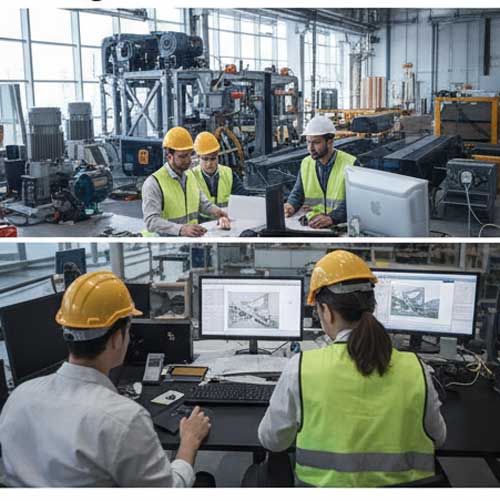
Steps for Escalator and Elevator Installation: From Design to Operation
The installation of escalators and elevators is a highly technical and detailed process, involving multiple stages from design to final commissioning. It requires precision, expert knowledge, and adherence to strict safety and quality standards. This article breaks down the various steps involved in the installation of escalators and elevators, from initial consultation to the final operating system.
Initial Consultation and Design
The first step in installing an escalator or elevator is a thorough consultation with the building’s developers or property owners. This stage is crucial for understanding the unique needs of the building, including factors like space limitations, expected foot traffic, and design preferences. A professional design team will assess the structural and electrical aspects of the installation site, ensuring that the system will integrate seamlessly with the rest of the building.
Design plans are created with a focus on optimizing functionality and safety while adhering to building codes and industry regulations. For example, the elevator or escalator must comply with the ISO 25745 standards, as well as any local building regulations. Special attention is given to the required weight capacity, speed, and accessibility features to meet the building’s needs.
Preparation and Site Assessment
Once the design is finalized, a site assessment is conducted to evaluate the space where the elevator or escalator will be installed. This involves checking the structural integrity of the area, as well as ensuring the availability of necessary utilities such as electrical power and ventilation systems. If any modifications to the structure are required, such as reinforcing floors or making space for the machinery, this will be planned and executed before installation begins.
Installation of Structural Components
The installation process begins with the assembly of the structural components, including the shaft, pit, and support frames for the elevator or escalator. For escalators, this involves setting up the tracks, which are critical for the smooth movement of the steps. For elevators, the construction of the shaft and the installation of the hoistway are the main focus. Skilled technicians and engineers work together to ensure that these components are correctly aligned and securely fixed in place.
Mechanical and Electrical Installation
Once the structural components are installed, the next phase is to install the mechanical and electrical systems. This involves the installation of the motor, gears, control panels, and electrical wiring for both escalators and elevators. For escalators, the moving steps, handrails, and safety sensors are installed. The electrical wiring must be done carefully to meet both safety standards and the functional needs of the system. Any integration with building management systems (BMS) for monitoring performance or energy usage is also set up during this phase.
Testing and Safety Checks
After installation is complete, the system undergoes a series of tests to ensure that it meets all performance and safety standards. This includes running the escalator or elevator through multiple cycles, checking the smoothness of movement, verifying the functionality of emergency stop buttons, and ensuring that all safety sensors are operational. Any necessary adjustments are made to ensure optimal performance.
Safety checks are vital and must meet local regulations, including testing the load capacity, speed limits, and braking systems. For escalators, additional checks are done to test the stability of the handrails and the alignment of the steps.
Final Commissioning and Handover
The final phase of installation is commissioning, where the escalator or elevator is officially handed over to the building management or owners. At this point, the system is fully operational, and final checks are made to confirm that everything functions as intended. A maintenance schedule and warranty details are provided to the building owners, and operators are trained on how to use the system and troubleshoot minor issues.
In conclusion, the installation of an escalator or elevator is a complex process that requires attention to detail and adherence to stringent safety standards. From the initial consultation and design phase to the final commissioning, Schneider Global Lifts ensures that every step is executed with precision and expertise. By following these steps, building owners can rest assured that their new escalator or elevator will operate efficiently and safely for years to come.




